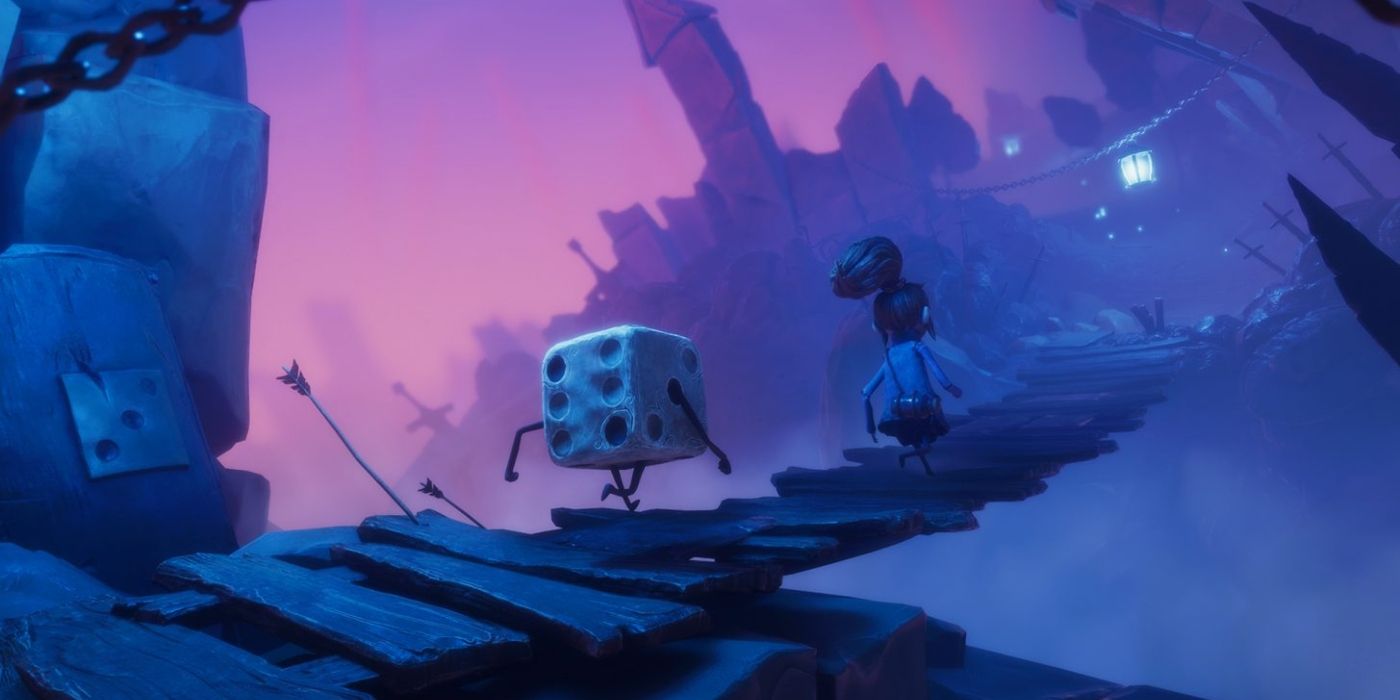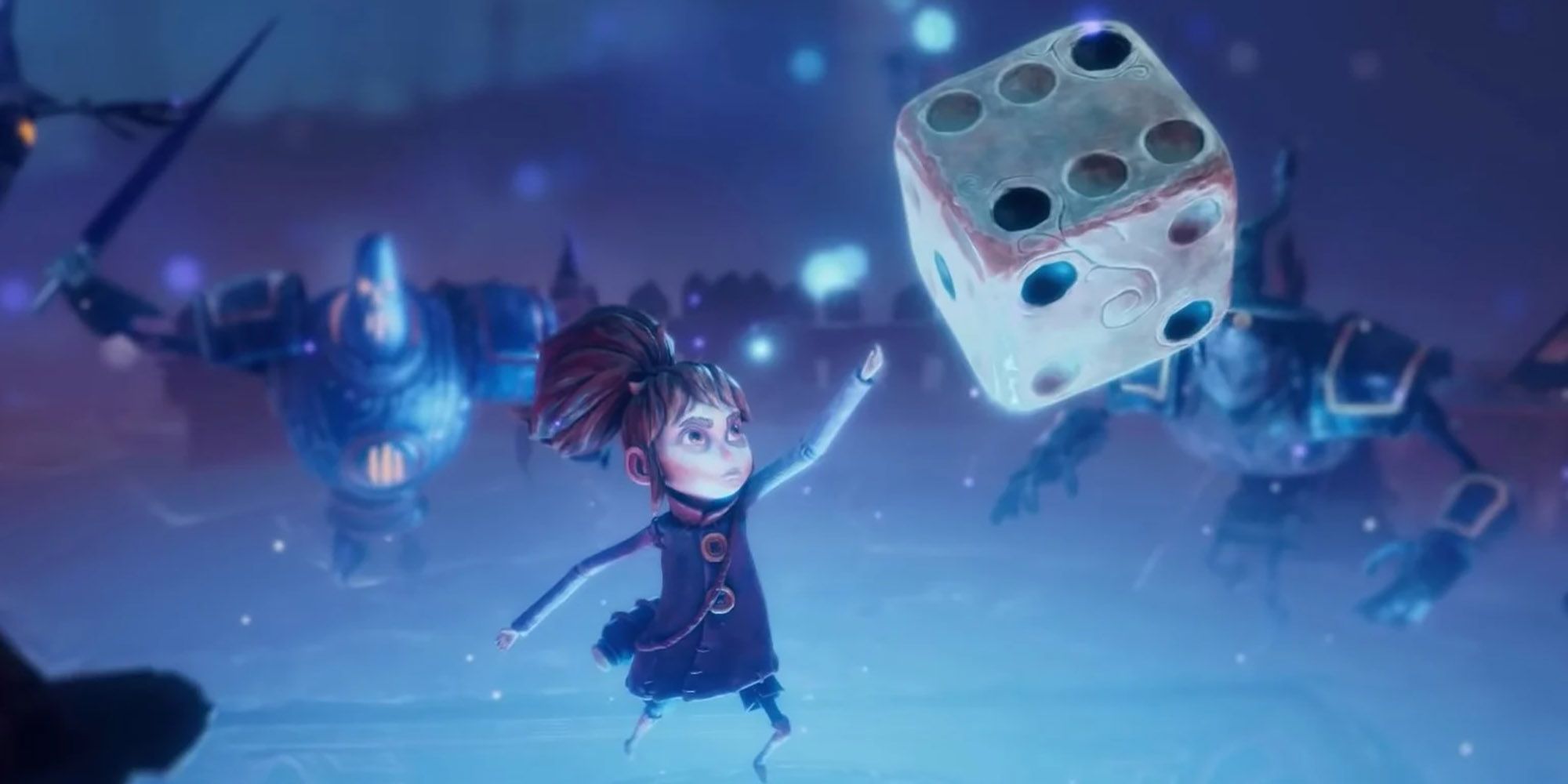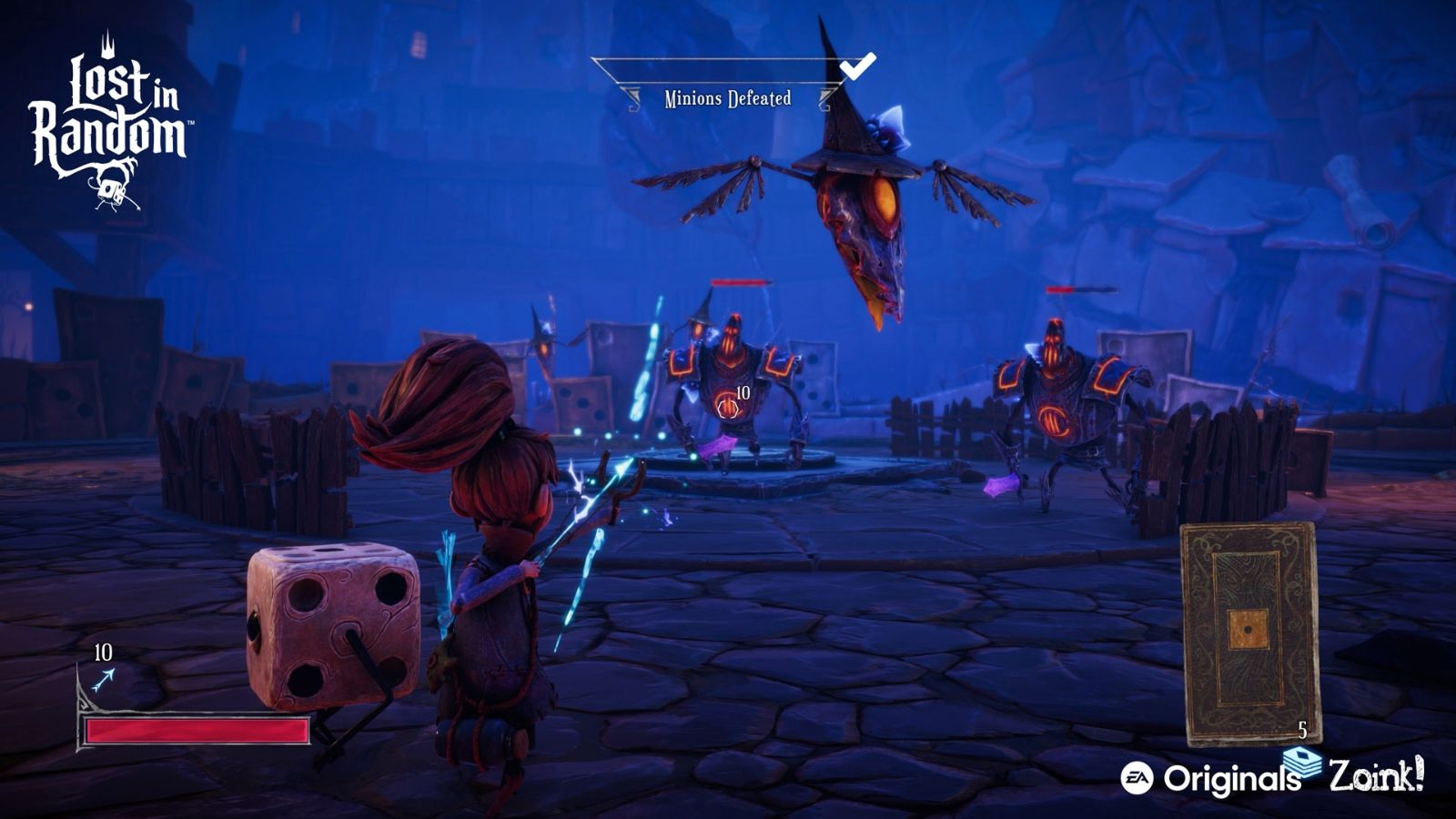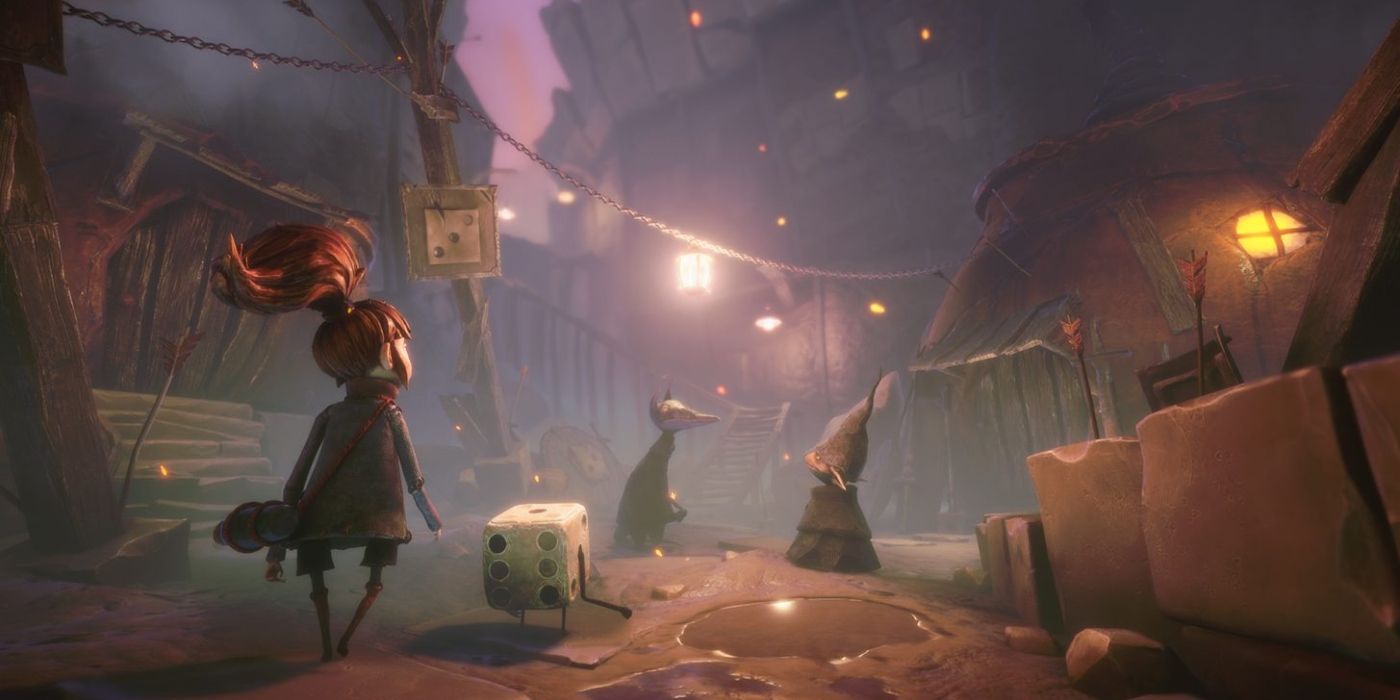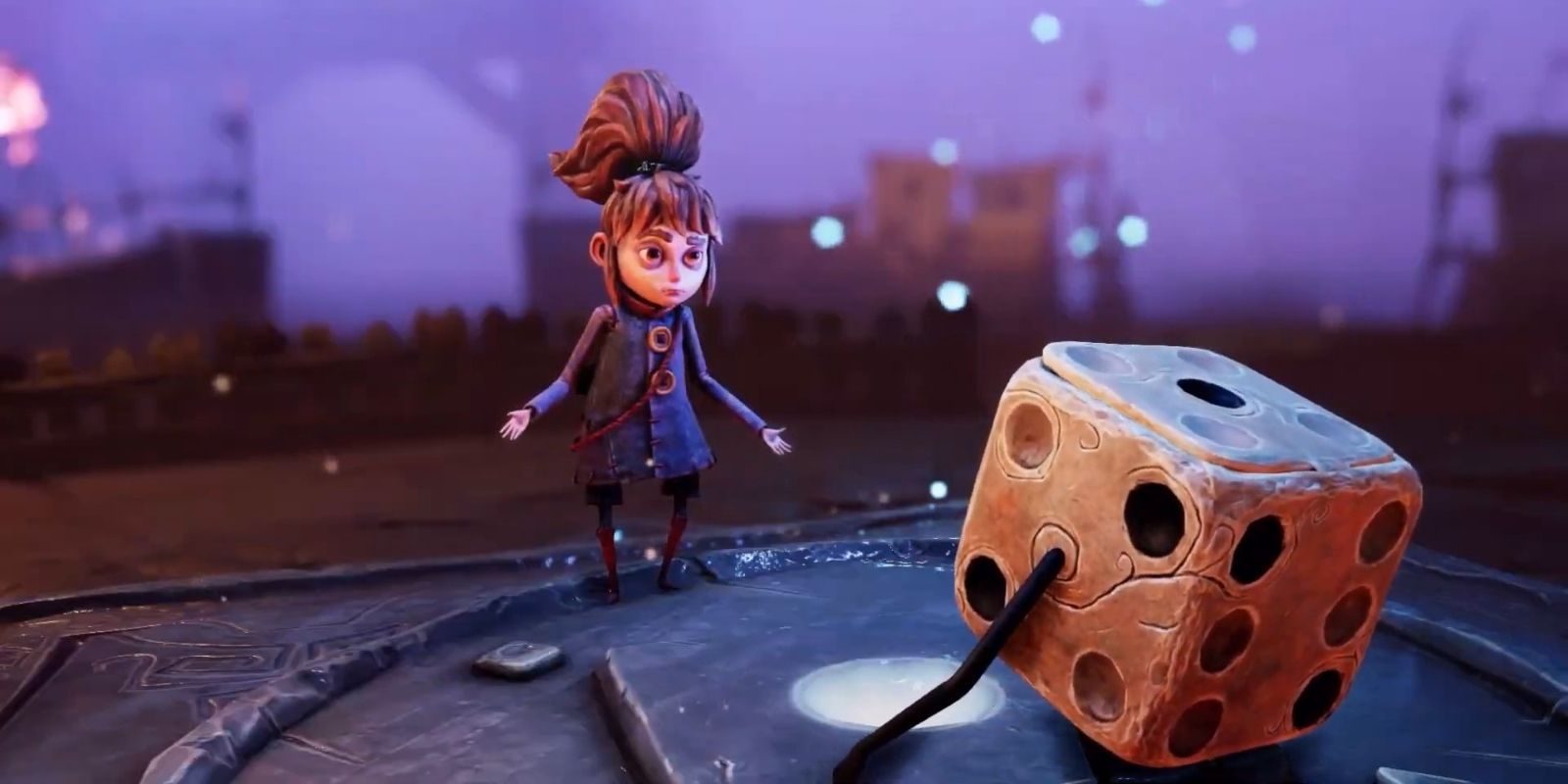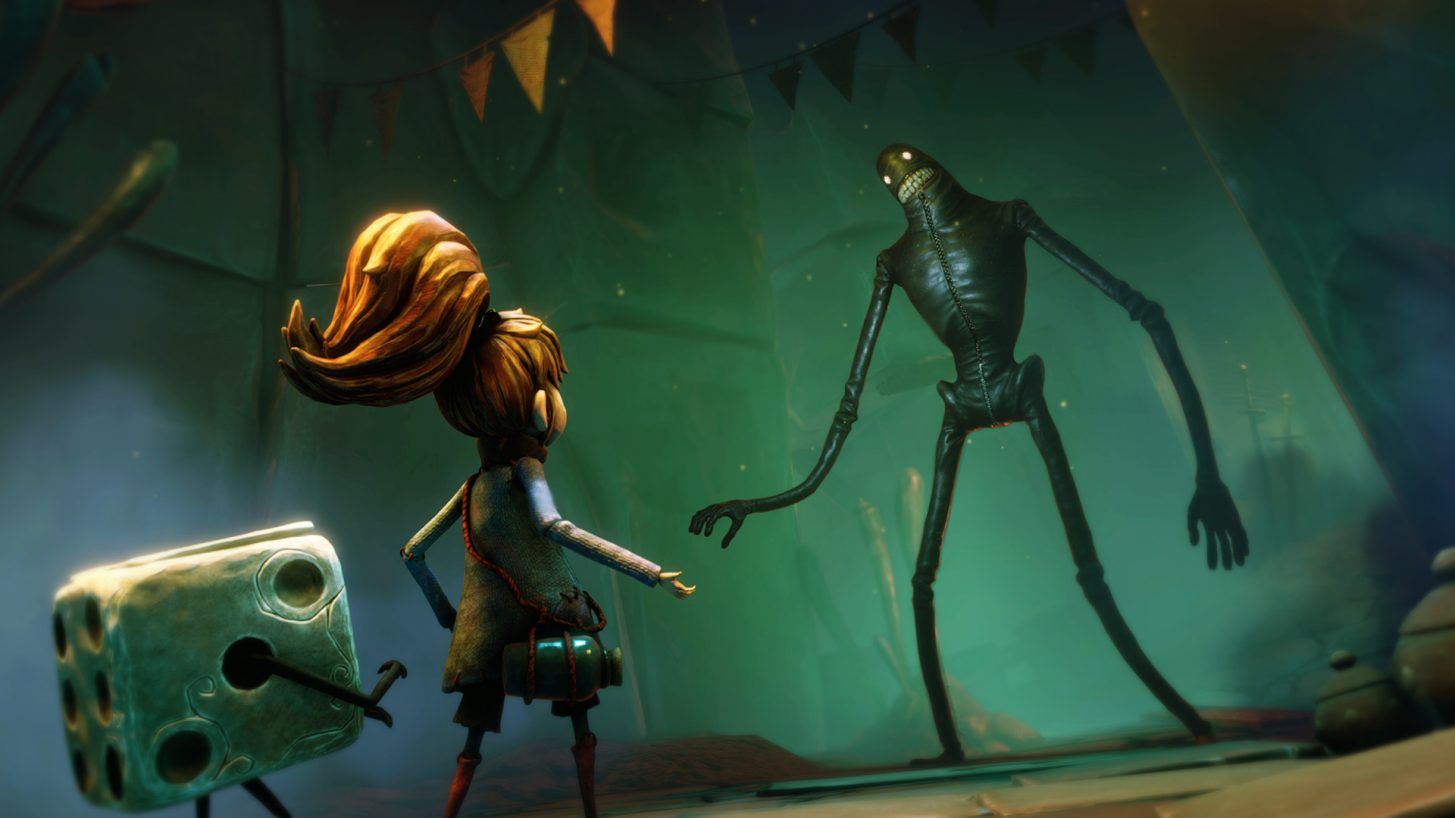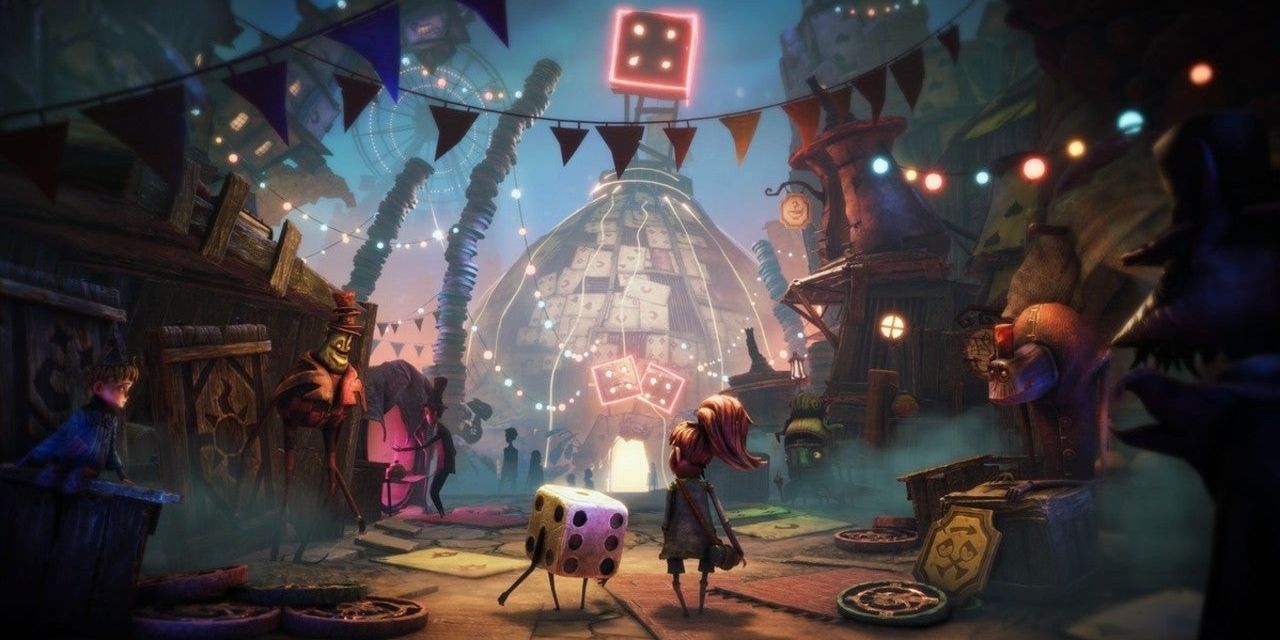For several years, video game publisher EA has worked with indie gaming studios to bring their projects to life. The first game to release as part of the EA Originals program was Zoink's 2018 game Fe. Now, the developer is releasing its second partnership with EA, the dark-fantasy, action-adventure video game Lost In Random. Its story centers on Even, a young girl living in the quirky Kingdom of Random, a place where the randomness of dice rolls rules all.
Teaming up with a sentient dice named Dicey, Even is on a mission to find her older sister, who she believes is in danger after being whisked away to another realm as part of a Random ritual. In addition to experiencing the game hands-on, CBR spoke with Lost In Random's directors Klaus Lyngeled and Olov Redmalm about their experience with the game, its influences, and what players can expect when the final product releases on Sept. 10.
CBR: What inspired the team to make Lost In Random?
Olov Redmalm: Before Lost In Random, we did Ghost Giant, which was quite bright and colorful. The studio loves Nightmare Before Christmas, and it's been a long time coming for us to make something like this. But the budget and technology just haven't allowed for it. Finally, it was time, with us merging with Image & Form into the Thunderful Group and the company growing... We wanted to make something new after Fe. We had a bigger budget. Suddenly, we could make our dream game, this very [Tim] Burton-esque stop-motion. We had to budget to pull off --
Klaus Lyngeled: Something bigger. It was also wanting to make something darker that has a little bit more depth to it. It's kind of an evolution of what we've done before, Stick It to the Man, Flipping Death, and then Fe. Maybe in the future, we're going to try and do something even darker than this. It's fun to actually explore these different themes.
I read a lot of art books, and I'm a huge fan of Shaun Tan. I saw this painting of a girl with a dice, and I thought, "Oh cool! What if you actually were a girl with a giant, living dice? What would happen then? And could you be inside a board game? How do we merge that with the gameplay?" Everything spawns from that idea of having a looming dice. We created a world around that.
That actually goes right into my next question. Did you have an art style in mind first that influenced the story? Or did the story influence the direction you went with the art?
Lyngeled: I would say the art style was in place before the game or the dice were there. I was already experimenting a lot on the side with doing sculptures, sculpting characters, painting them, and drawing darker stuff. And then looking for a theme that could fit into that.
Redmalm: I remember the first sketches, but even before we found the dice painting, we had this even more desaturated image of this kind of spooky girl with a little cone-shaped hat. She was just walking through this very gloomy, Shaun Tan-inspired, moody world. At that time, we were looking at making this very atmospheric walking simulator.
Lyngeled: Yeah! We did have some other game mechanics. I remember there was one where you were following a thread through a whole world. I felt it was a cool gameplay mechanic, but then I thought, "Ah, it's going to be compared to Unraveled. Let's not do that!"
Redmalm: We're in the same family.
Lost In Random has a really unique mix of action and card battler elements with a time freezing mechanic that feels good to play. How hard was that to perfect, and did these systems go through a lot of iterations?
Lyngeled: It was hard! The idea actually comes from one of our lead combat designers Martin Storm. I've worked with him for 12, 13 years now. He's been part of the Zoink family for a long time. We were discussing board games, what you do in them, what's fun about them. A lot of it is throwing dice and getting to make some decisions. We wanted to have that inside the battles but wanted to do something action-y. We didn't want to turn it into a turn-based game.
That's how the idea came about. There's all this action going on, and then you throw the dice. And then you pause, and it's time to make those decisions. I can look around at what's going on. I could pick this, pick that. I got this number, and if I got that number, then I could choose that and that and that. That's similar to how it is in a board game. You throw the dice, and then depending on what number you have, you have to make some critical decisions.
Redmalm: At first, in the earliest demos or trials where we would test things, I remember gameplay revolved around a lot of unique puzzles or things in the environment, like in Ghost Giant or Flipping Death. But it wasn't a sustainable way of making a longer game. We wanted to make a gameplay loop that you could expand on and build on that could run through the whole game. That's where dice battle came in.
Lyngeled: There's still a lot we would love to explore with this. There are so many things we can still expand on. What's been hard is finding the value of how long and how often should you pause the game so it doesn't get annoying or in the way of your battle. To make it feel like it's cool to pause, and it's cool to throw the dice. We do some pretty cool stuff when you get further into the game where you have to be careful with what happens in pause time too.
I know I've been using pause time to sit down and strategize a bit too, so I'm looking forward to that challenge and having to use that time differently.
Lyngeled: It gets really stressful!
Redmalm: The theme around the dice really lends itself well to the story, but also the gameplay. You're playing a child and feeling like a child with your little slingshot and shooting at these huge robots coming at you. That curve builds through every battle, and you're building your confidence and strength. There's a dance between feeling very insignificant, then so strong and ready for anything.
Speaking of the story and the concepts behind it, randomness is part of pretty much every game, but what made you decide to focus on it and make it literally the name of the game?
Redmalm: Like you say, I think it's so interesting that randomness is an element of every game, but, it isn't dealt with or talked about openly very often. There's also always scary stuff happening in the world, and it makes you think. I'm a very anxious person, so for me, it's been therapeutic to work with this. It's like, "What if every thought is a roll of a dice?" It's a very interesting things to talk about from a mental health perspective, but also in terms of anxiety about the future. That can kind of seep into the characters and the world.
I think what's really interesting about the gameplay loop itself is that we take a thing you take for granted like randomness and put it there in the world. It's your character. It's Even rolling Dicey, pausing time. They're aware of it as much as you are. There's also the narrator who follows Even around and comments, and you're not quite sure if she's aware of him or not.
Lyngeled: Once you pick up a dice and say, "Okay, we're gonna make a game about a dice," it's obvious. What is the cool thing about a dice? It's obviously randomness: it's something you can't control. And then you start thinking, "Well, why is this so popular? Why is it popular to have randomness in a game? Why is that? Why do people like that?" It's something about hope, about wanting this, but not getting it and hoping you get it. There's some kind of excitement to that.
Redmalm: And the fun of getting what you want then or having an accident. I really loved the old Baldur's Gate games because they were so chaotic. They have their own way of pausing the game, and all this unpredictable stuff happened -- your characters get possessed, or you get blown up by your by your own fireball -- and that kind of chaos. Personally, that's been a huge inspiration for me to narrow it down to a more accessible, simplified version while still keeping that fun chaos and relief. Find balance, as you say, Klaus.
Lyngeled: For me, it was really looking at the subject and realizing there's something interesting here. It's very popular to have randomness -- why is it that?
Speaking of randomness, as much as it can be fun and enjoyable, it can also be frustrating, especially when things don't go your way. How did you design and balance the game so it doesn't feel unfair or unnecessarily frustrating when the dice rolls aren't in your favor?
Redmalm: One very concrete thing is that, as you progress through the game, you'll unlock these golden pins that you can place on a card if you roll your dice and don't have enough tokens. You can place that pin on a card to save it until next roll. It was a constant challenge of tuning and finding just the right balance of not getting what you want or getting what you want.
Lyngeled: I think that hits the subject, in a way, because it's about first having something that's a bit out of control and you can't deal with it. Then, you give the player something so they feel like, "I can control this a little bit better " -- and then you add something else so they lose control again. Then you add something else so they get it back again. That kind of gameplay, that back and forth is what makes it interesting. Losing control and getting control.
I'm definitely seeing that in the game. I also want to talk a little about Dicey. He's adorable, and I love your [Olov Redmalm's] voice for him. The one-sided conversations are very Guardians of the Galaxy where Groot is just saying, "I am Groot" and everyone else is saying, "No we can't do that!"
Redmalm: We actually have different moods for [Dicey]. He actually has different ways of putting things!
Lyngeled: For me, it was also about the way Hans Solo talked to Chewbacca. It's always really fun that he understands everything and he's actually telling us what the character's saying.
Redmalm: Speaking of Star Wars, we have Brian Herring, who was the puppeteer for BB-8. He was our big name. He does the voice for Mannie Dex the card shop, and also an actual puppeteer later in the game. It was so fun to see him work with this crazy dude who has these different puppets around him that he make voices for. It's great.
From what I've seen so far, each of the worlds feels thematic and fitting for their numbers. For example, the citizens of Two Town are two-faced and shift personalities at the drop of the hat; they're centered around duality. Could you speak to how you made each area feel distinct and special?
Redmalm: A really fun challenge!
Lyngeled: Yeah. When we sit down, it's kind of like a writer's room in a way. You sit with people that you're really comfortable with, and you can throw ideas at each other. We start with the numbers [asking], "What about numbers? How can we make this interesting?" In Stick It to the Man, for example, we had characters that had two personalities. It was something we'd done another game, and I thought it'd be cool to develop it a bit more.
It's about coming up with cool stories that fits the theme while playing around with the number itself. But there are also some environments where it's not really about the number. Obviously, because it's about dice, we said, "We should have some kind of gambling or casino level because it fits. You need to put that in there somewhere." It's just crazy ideas around until you find something.
Redmalm: And sometimes, if you have a great idea that leaves the spectrum of numbers, you've got to follow that. For instance, that casino world. We had a lot of meetings where we would start working and then we realized it's not distinct enough. We would always go back to the drawing board to try to push it art-wise and color-wise and character-wise and theme-wise. We ended up with something just random enough.
Lyngeled: We're both big fans of Over the Garden Wall, and we like the way there's an overarching story that goes through the whole thing. But then each episode is so unique and interesting, and there are so many different characters. It's kind of how we want each level to feel. There's a mini sub-story for each level. It's quite usual in games, of course, but that's the feeling of it.
Redmalm: There's also the Shaun Tan and [director Hayao] Miyazaki inspiration. You want to come up with a system and logic in this world, but you also want to have cases where it doesn't make sense. We have this concept of the Shadow Man who pops up in Three Town. He kidnaps kids and puts them in his rib cage -- and he has nothing to do with three. He's just this old fairy tale monster that pops up in the legends, and it's just creepy fun.
Speaking of cool monsters, I just did the Two Town boss fight, and I really liked the way it incorporated the boss' character in the middle of combat. Can we expect more like creative things like that from the full game in terms of fights and combat?
Redmalm: Like with the themes, we try to explore something new within the board games for the bosses you meet. No boss is like the other, I would say. There are a lot of quite fun variations on bosses.
Lyngeled: And board games too. I think you can definitely expect some more fun characters.
Board games and card games are obviously a huge inspiration on the whole game and its aesthetic. Are there any specific ones that you love or that you took inspiration from?
Redmalm: It's mostly just the look. I mean, I did play Dungeonquest, or Drakborgen in Swedish. It has this map where you place these squares with rooms to explore the dungeon and get to the center where the dragon rests with the treasure. The way the board game changes is something that we always talked about. How can we make make a board game arena that at least feels a little bit alive and changes your tactics?
Lyngeled: Another thing is her being small and in a giant board game. It's a bit like the Harry Potter movie where he moves the chess pieces around, and it feels like you're stuck in this giant thing that you can't really control. It fit well to Even being stuck in the Queen's mad contraptions. That's the kind of feeling we want, and I think it worked out really well.
But because of because of the game mechanics, we had to really come up with innovative ways to create our own board game. There are some inspirations, like roulette, but it was actually quite hard to take specific board games and put them in there. Because it has to fit really perfectly to what we have.
Redmalm: It's difficult enough to follow what happens while you're fighting, so we try to keep it kind of basic "snake and ladders" kinds of board games that everyone can relate to like dice.
Lyngeled: Just a simple thing, for example. You know when you have two playing pieces and you move forward, and then if one playing piece hits the other one, it falls back from the other? That's a very simple mechanic we have in one level where you're stuck between two pieces, and if you got smashed between them, you basically die. It's a very simple thing that becomes really cool in this setting where you are a tiny character.
Finally, what is it like for you as an indie studio working with an industry giant like EA?
Lyngeled: It really helps push you. We can concentrate on just making the game, and we don't have to worry about marketing, for example, or setting up this interview. It's like having an amazing agent or someone who just does it for you. The most positive thing is how they've been supportive with decisions and ideas. Obviously, quality assurance. We're releasing this game on several platforms, and it's very complicated. From Nintendo Switch to PlayStation 5 -- it's very different.
Redmalm: We're all pleasantly surprised about how well it runs on Switch. And, of course, we're so grateful to the QA team provided by EA.
Lyngeled: It's using that well-oiled machinery to get your thing up really quickly and get it presented, but still keeping the control of what you're actually creating. The whole creative part is really yours, and it's really up to you how you do it.
Developed by Zoink and published by EA, Lost in Random will release on Sept. 10 for PC, PlayStation 4, PlayStation 5, Xbox One, Xbox Series X|S and Nintendo Switch.

